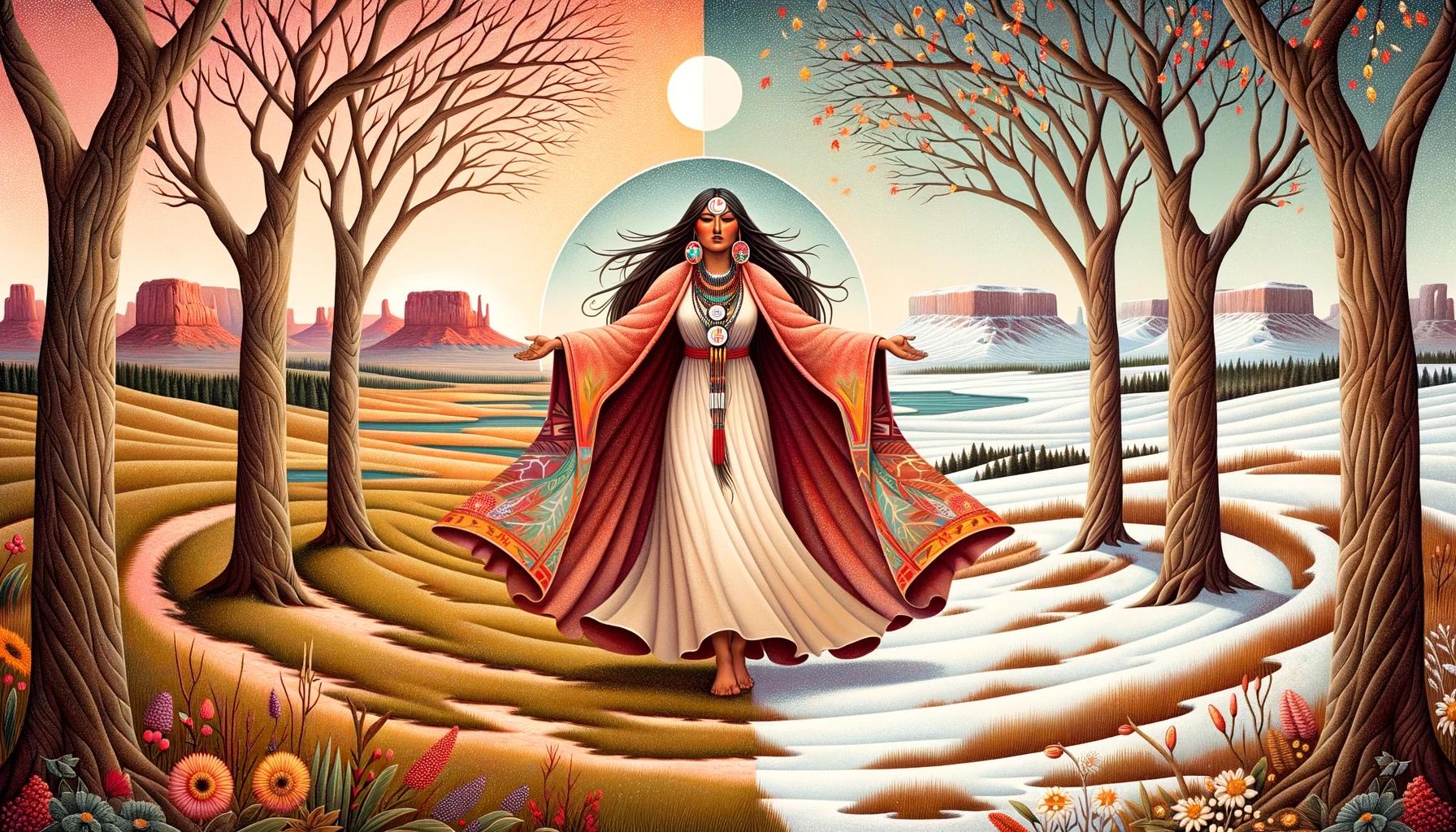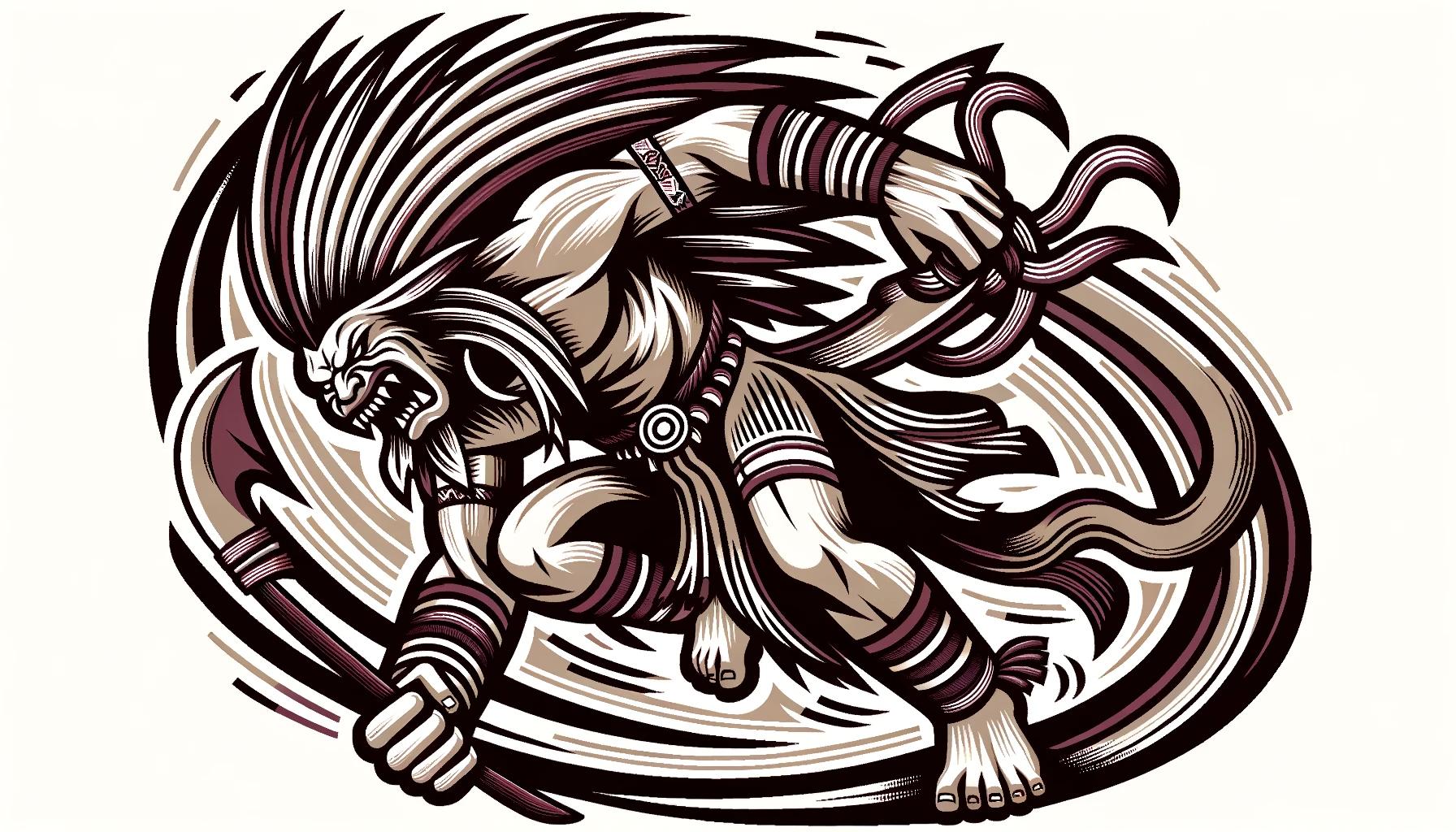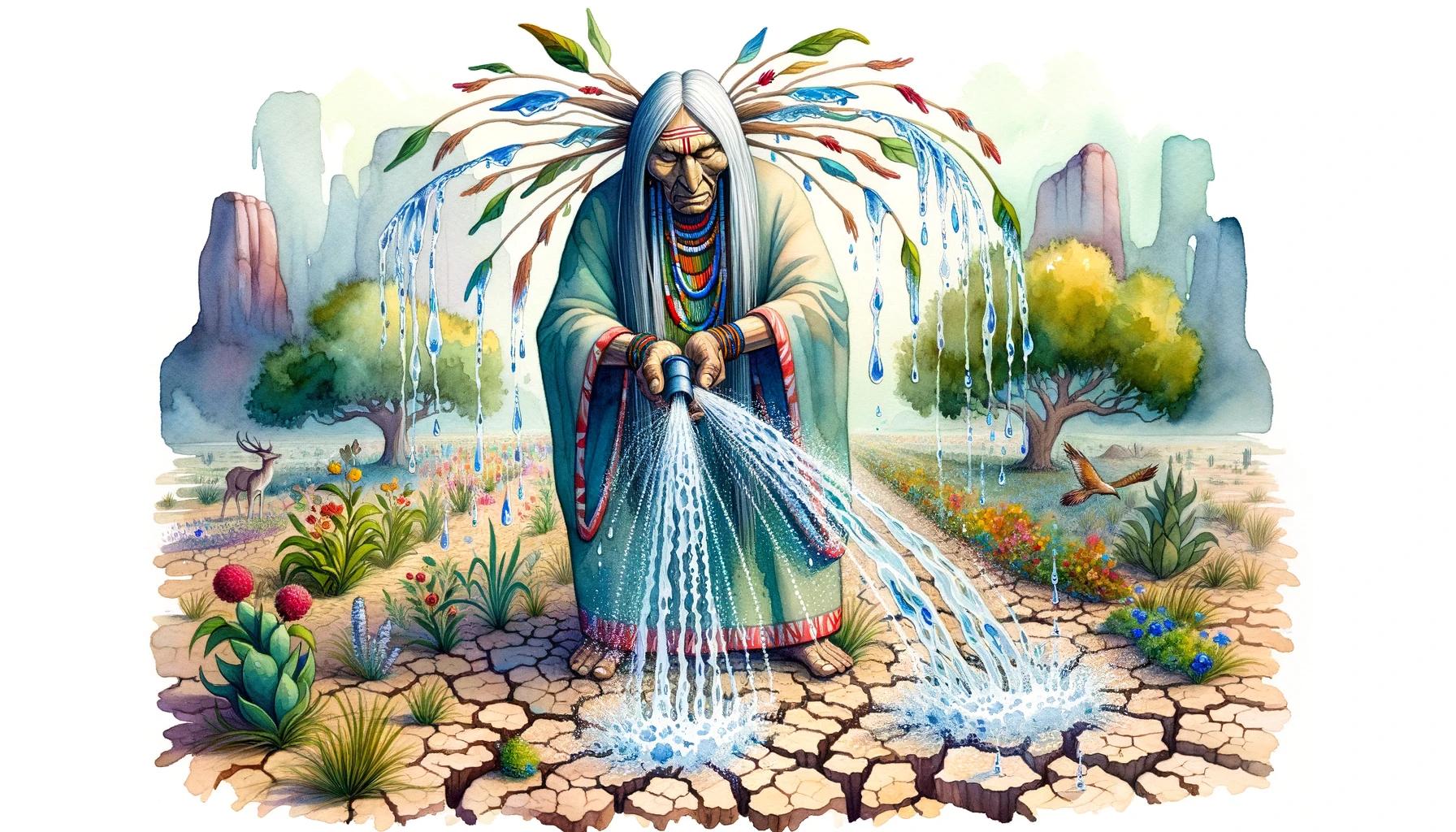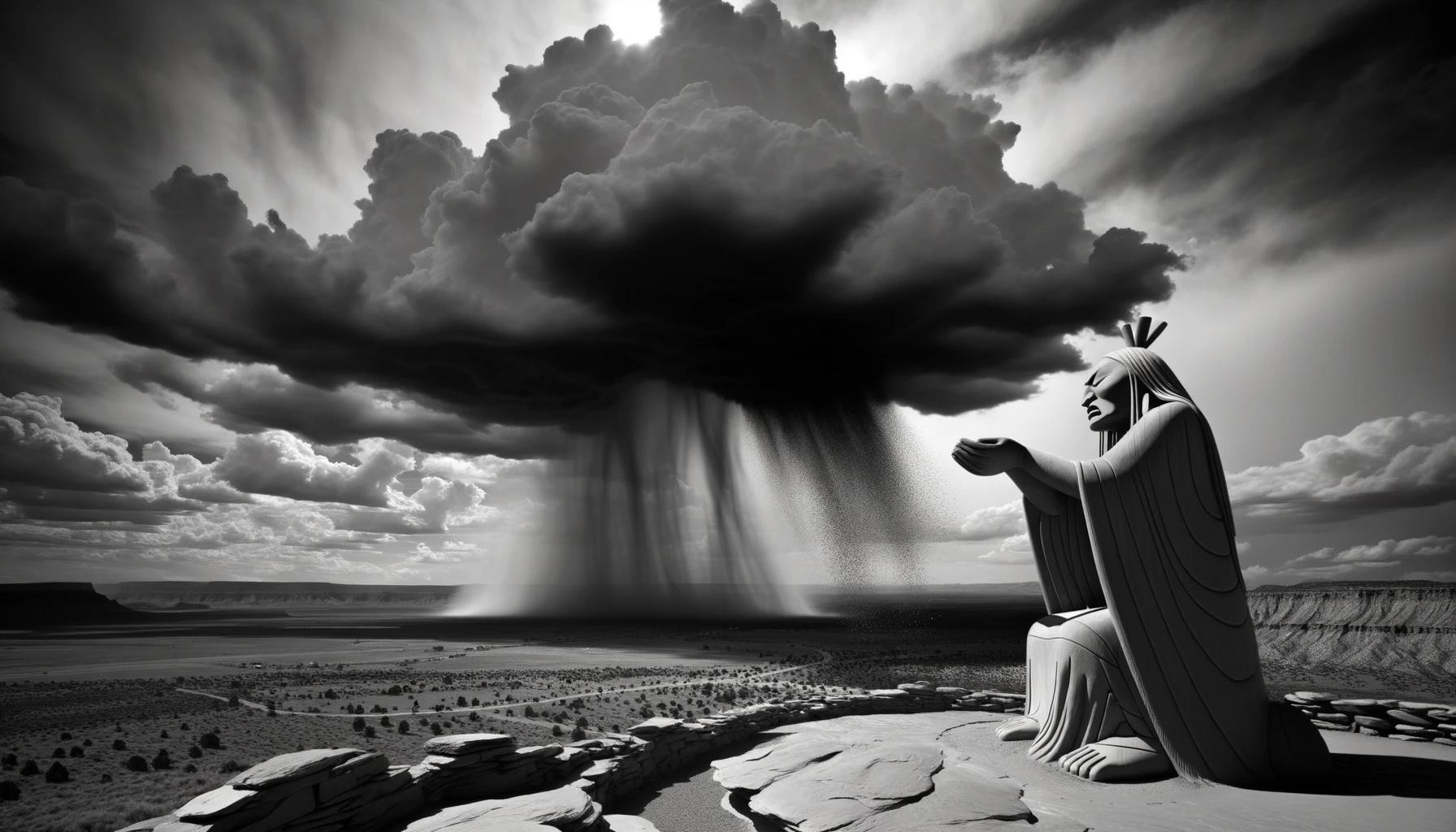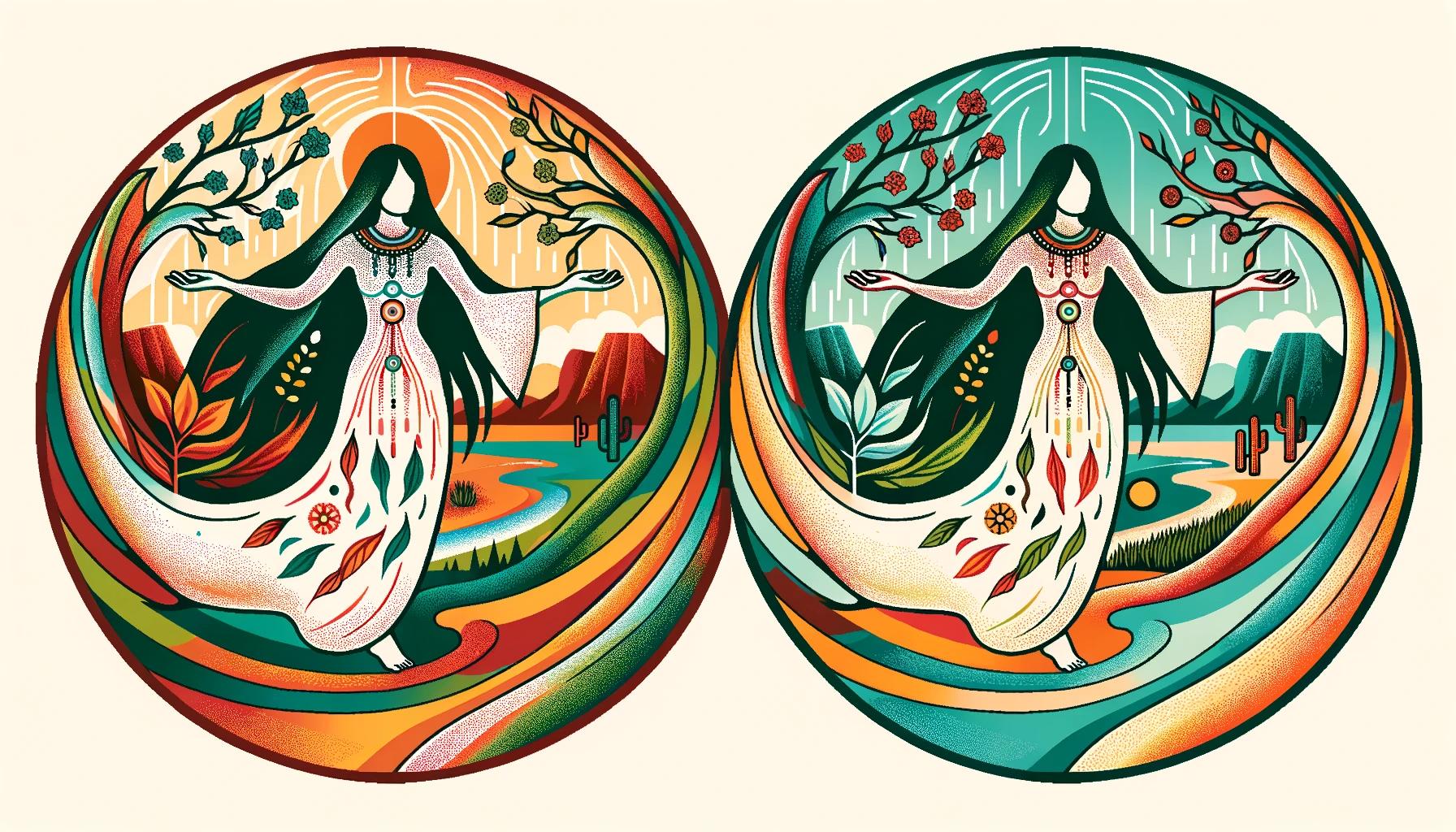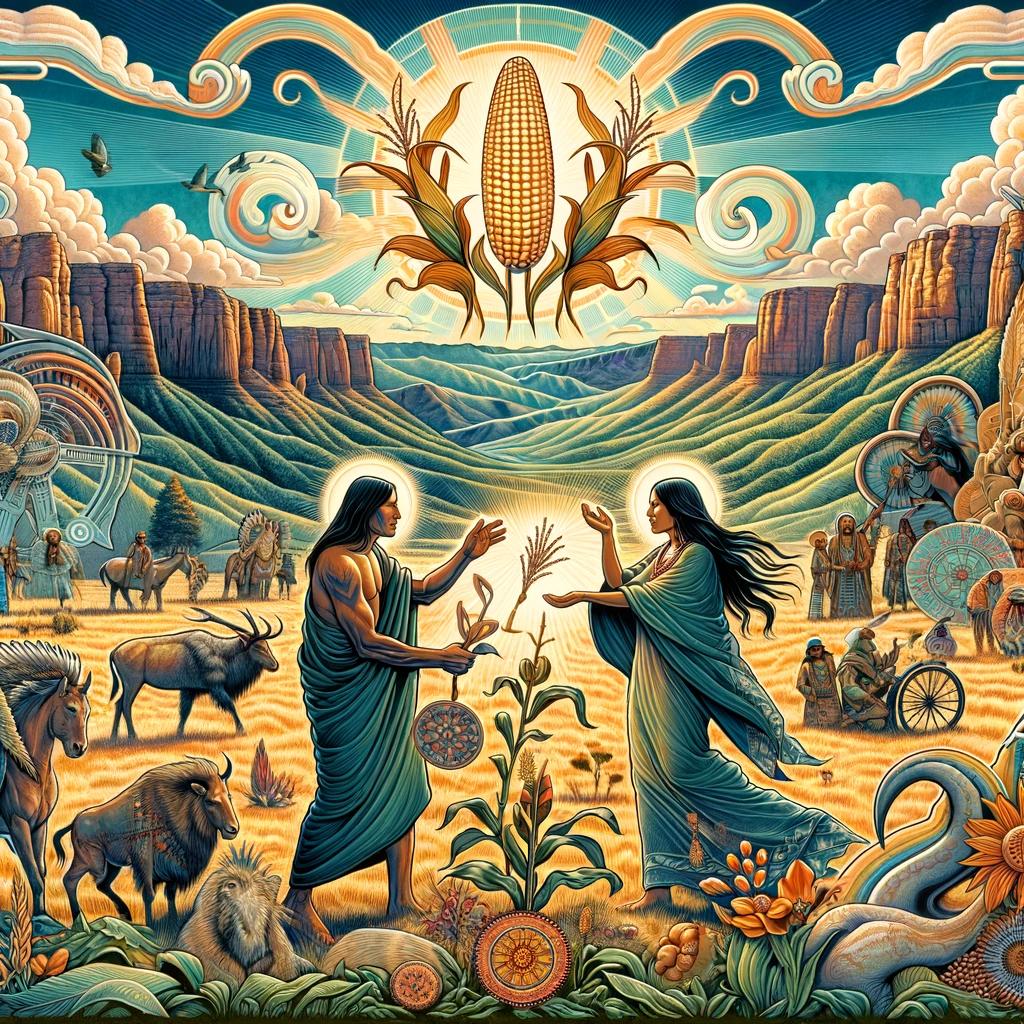Navajo Changing Woman Goddess: A Sacred Symbol of Transformation and Power in Navajo Culture
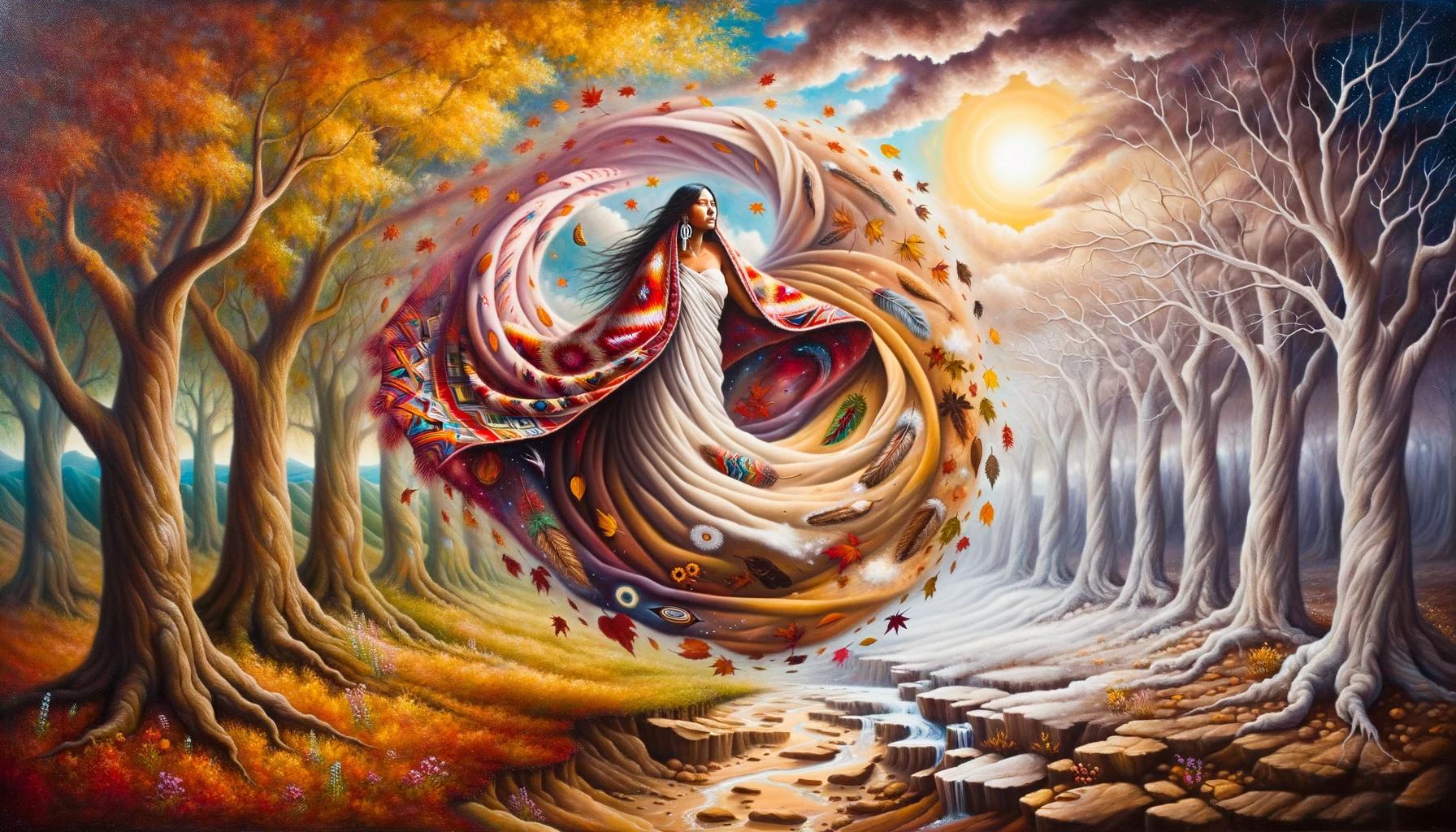
The Navajo Changing Woman Goddess holds great significance in Navajo culture. Representing transformation and power, she symbolizes the cycles of life, fertility, and the changing seasons. The mythological narrative of Changing Woman and her sister, White Shell Woman, is deeply embedded in Navajo traditions.
Ceremonies and rituals dedicated to Changing Woman honor important life milestones such as birth, coming of age, weddings, and house blessings. Her offspring, Johonaa’éf and Child of Water, play key roles in Navajo mythology.
Changing Woman’s creative powers also extended to the creation of the Navajo people and the vital staple of maize. Her divine presence has influenced art and literature, showcasing her timeless significance beyond Navajo society.
Through this article, we delve into the immense importance and symbolic meaning of Navajo Changing Woman Goddess, exploring her role in ceremonies, her mythical family, and her enduring presence in various creative forms.
Finally, we examine the power and contemporary relevance of Changing Woman, shedding light on the enduring notion of cultural identity and the preservation of Navajo traditions.
The Navajo Changing Woman Goddess: Exploring her Importance and Meaning
The Navajo Changing Woman Goddess holds immense significance in Navajo culture as a symbol of transformation, power, and the cyclical nature of life.
This section delves into the history, symbolism, and mythological narrative surrounding Changing Woman and White Shell Woman, shedding light on their significance in Navajo culture.
The History and Significance of Changing Woman in Navajo Culture
Changing Woman has a rich history intertwined with the Navajo people’s traditions and beliefs.
She is revered as the most respected goddess in Navajo mythology, embodying the power of life, fertility, and the ever-changing seasons. Her continuous transformation portrays her eternal presence and her significance in Navajo cosmology.
The Symbolism of Changing Woman: Life, Fertility, and Seasons
Changing Woman’s symbolism resonates deeply with the Navajo people, highlighting the interconnectedness of life, fertility, and the natural cycle of seasons. She represents the constant change and growth that permeate existence, as well as the nurturing qualities associated with women and their role in sustaining life.
Through her symbolism, Changing Woman embodies the beauty and resilience of nature.
The Mythological Narrative of Changing Woman and White Shell Woman
The mythology of Changing Woman and her sister, White Shell Woman, further illuminates their importance in Navajo culture. White Shell Woman is the embodiment of rain clouds, providing the essential nourishment for the land and people.
The intertwined narratives of Changing Woman and White Shell Woman reinforce the Navajo worldview and underline the significance of these deities in their spiritual practices.
Ceremonies and Rituals Dedicated to Changing Woman
The Navajo Changing Woman is revered through various ceremonies and rituals that hold deep significance in Navajo culture.
These practices honor different stages of life and invoke the blessings of Changing Woman for key milestones and events.
The Role of Changing Woman in Navajo Birth Ceremonies
In Navajo culture, the birth of a child is celebrated with a special ceremony dedicated to Changing Woman. This ceremony seeks the protection and blessings of Changing Woman for the newborn and the mother.
Prayers and rituals are performed to ensure the well-being and health of the child and to express gratitude for the gift of life.
Coming of Age: The Navajo Kinaaldá Ceremony and Changing Woman
One of the most important ceremonies involving Changing Woman is the Navajo Kinaaldá ceremony, which marks the transition of a girl into womanhood.
This transformative event celebrates the onset of menstruation and prepares the young woman for her future roles and responsibilities within the Navajo community. Changing Woman is invoked to bless and guide the young woman through this significant stage of life.
The Sacred Connection: Changing Woman’s Presence in Navajo Weddings
In Navajo weddings, Changing Woman holds a sacred place. Her presence is invoked to bless and protect the union of the bride and groom. The couple seeks her guidance for a harmonious and fruitful marriage, and rituals are performed to honor and acknowledge her role as a symbol of fertility, growth, and transformation.
Blessing a New Home: Invoking Changing Woman’s Favor
When a Navajo family moves into a new home, they often perform a ritual to invoke Changing Woman’s favor and blessings. This ceremony is a way of ensuring a prosperous and nurturing environment for the family.
Prayers are offered to Changing Woman, expressing gratitude for her presence and seeking her assistance in creating a sacred and harmonious space.
Changing Woman’s Offspring: Johonaa’éf and Child of Water
The descendants of Navajo Changing Woman, Johonaa’éf and Child of Water, play significant roles in Navajo mythology. Their stories and characteristics are deeply intertwined with the legacy of Changing Woman, reflecting her power and influence.
The Adventures of Johonaa’éf: Monster Slayer, Son of Changing Woman
Johonaa’éf, also known as the Monster Slayer, is a heroic figure born from the union of Changing Woman and the Sun. He was chosen to rid the world of dangerous monsters and restore balance.
With his fearless spirit and exceptional skills, Johonaa’éf embarked on epic quests to confront these menacing creatures, protecting the Navajo people.
Child of Water: The Healing Powers and Connection to Changing Woman
Child of Water, the other offspring of Changing Woman, possesses incredible healing abilities.
As a representation of the life-giving element, water, Child of Water holds a deep connection with Changing Woman’s nurturing and fertile nature. With their healing touch, Child of Water brings restoration and vitality to those in need.
Both Johonaa’éf and Child of Water embody the qualities inherited from Changing Woman, showcasing strength, resilience, and determination in their respective roles. Their stories intertwine with Navajo mythology, emphasizing the importance of harmony, protection, and rejuvenation within the tribe.
- Johonaa’éf, the Monster Slayer, confronted dangerous monsters and safeguarded the Navajo people.
- Child of Water possessed extraordinary healing powers, symbolizing rejuvenation and vitality.
Changing Woman as Creator: The Legend of Ancestors and Maize
The Navajo Changing Woman Goddess holds a central role in the creation of the Navajo people and their sustenance.
This section delves into the captivating legend of how Changing Woman gave birth to the ancestors of the Navajo and the profound importance of maize in their culture.
Creating Life: How Changing Woman Gave Birth to the Navajo People
According to Navajo mythology, Changing Woman used her divine powers to bring forth the creation of the Navajo people.
She crafted her companions, both men, and women, by molding them from her own skin. With her nurturing touch, these ancestral beings came to life, forever connecting the Navajo to their primordial source.
The story of Changing Woman’s role as a creator highlights her immense power and the everlasting bond between her and the Navajo people. This legend signifies the reverence and gratitude that the Navajo hold for their divine origins, emphasizing their deep spiritual connection to Changing Woman as their progenitor.
Nourishment and Sustenance: The Importance of Maize in Navajo Culture
Maize, the sacred crop bestowed upon the Navajo by Changing Woman, holds great significance within their culture. In Navajo tradition, maize represents sustenance, abundance, and nourishment. Its cultivation and consumption are integral to the spiritual and physical well-being of the Navajo community.
Maize is not merely a staple food but also a symbol of unity, as it brings the Navajo people together in gratitude for the blessings of nature. It is seen as a gift from Changing Woman, providing sustenance and reminding the Navajo of their deep connection to the earth and all living things.
The importance of maize extends beyond its nutritional value. It plays a vital role in Navajo rituals and ceremonies, symbolizing fertility, growth, and the cyclical nature of life. Additionally, maize holds cultural and historical significance, representing the enduring traditions and ancestral wisdom passed down through generations.
In conclusion, Changing Woman’s role as a creator is deeply intertwined with the legend of the Navajo ancestors and the importance of maize in their culture. This section explores the sacred narrative of how Changing Woman gave birth to the Navajo people and highlights the profound significance of maize as a symbol of sustenance and connection to the natural world.
These enduring traditions and beliefs continue to shape the Navajo’s cultural identity and spiritual practices in the present day.
Key points:
- The Navajo Changing Woman created the Navajo people by molding companions from her own skin.
- Maize is an essential crop that represents sustenance, abundance, and cultural unity within Navajo society.
- Maize is a symbol of fertility, growth, and ancestral wisdom passed down through generations.
- The spiritual connection between Changing Woman, the Navajo people, and maize is profound and continues to shape cultural identity today.
The Sacred Connection: Changing Woman in Art and Literature
The mythical presence of Changing Woman extends beyond Navajo society, influencing various art forms and literature.
Her symbolic significance and transformative nature have captivated artists and authors, resulting in powerful representations and narratives. Exploring Changing Woman’s portrayal in modern art, literary works, and the cultural and religious significance attached to her allows for a deeper understanding and appreciation of this revered Navajo deity.
Beyond Navajo Society: Changing Woman’s Influence in Modern Art
Changing Woman’s compelling story and association with change and fertility have inspired artists beyond Navajo society. Through various mediums such as paintings, sculptures, and mixed media, artists have visually depicted her transformative power, connection to nature, and the cycles of life.
These artistic interpretations serve as a testament to Changing Woman’s enduring relevance and her ability to inspire creativity across cultural boundaries.
Discovering Changing Woman in Literature: Exploring the Book ‘Changing Woman and Her Sisters’
The publication ‘Changing Woman and Her Sisters: Stories of Goddesses from Around the World’ provides a comprehensive exploration of Changing Woman’s significance alongside other goddesses in different cultures.
This book delves into the myths, legends, and ancient tales surrounding Changing Woman, shedding light on her symbolism, importance, and role in Navajo culture. It serves as a valuable resource for those seeking a deeper understanding of Changing Woman’s legacy and her interconnectedness with divine feminine archetypes worldwide.
Cultural Appreciation and Religious Significance: Respectfully Engaging with Changing Woman
Engaging with Changing Woman’s story, whether through art or literature, presents an opportunity for cultural appreciation and dialogue. It is crucial to approach these representations with respect, understanding the sacredness tied to Changing Woman within Navajo culture.
Recognizing her religious significance and understanding the historical and cultural context behind her mythology fosters a more meaningful and authentic connection to this revered goddess.
By exploring Changing Woman’s presence in art and literature, one can gain insight into her transformative essence and divine influence.
Through these mediums, individuals can engage with her symbolism, appreciate the beauty of her portrayal, and expand their understanding of Navajo culture and spirituality.
Exploring the Power and Meaning of Changing Woman: A Contemporary Perspective
Interpreting Changing Woman’s Message in the Context of Today’s Society
As we delve into the power and meaning of Changing Woman in contemporary times, it is essential to understand how her message translates to our society today.
By examining her role as a symbol of change, fertility, and growth, we can gain insights into navigating the complexities of our ever-evolving world. Changing Woman’s timeless wisdom encourages us to embrace transformation and adapt to the shifting seasons of our lives.
Empowerment and Cultural Identity: How Changing Woman Inspires the Navajo People
One of the most profound impacts of Changing Woman on the Navajo people is the sense of empowerment she instills. As Navajo individuals connect with her story and teachings, they find strength in their cultural heritage and a renewed sense of identity.
Changing Woman’s role as a creator and sustainer of life empowers Navajo individuals to honor their roots, preserve their traditions, and navigate the challenges faced by indigenous communities today.
Preserving Tradition: The Ongoing Importance of Changing Woman in Navajo Culture
Through the ages, Navajo culture has evolved while staying rooted in its traditions.
Changing Woman continues to hold a significant place in Navajo society, serving as a constant reminder of the importance of preserving cultural heritage. As Navajo communities face modernization and external influences, the ongoing reverence for Changing Woman functions as a unifying force, reinforcing the need to honor and pass on the rich traditions of the Navajo people to future generations.
.











